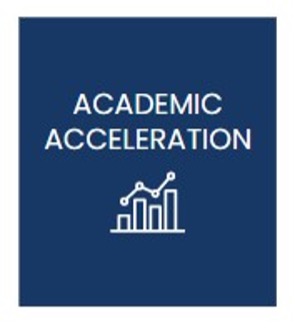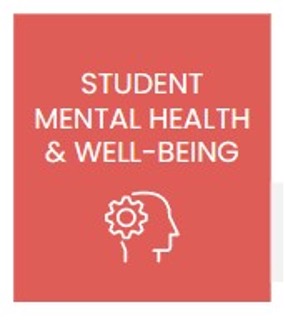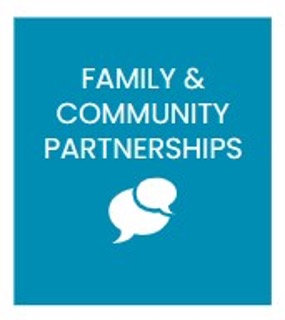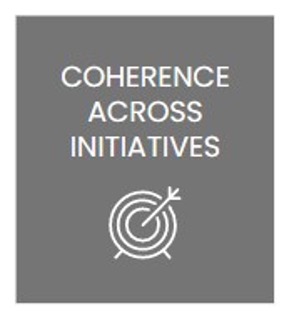Act on Evidence Toolkit
About
We’ve heard from district leaders that they need a way to use evidence to improve their existing programs. “I don’t want to create a brand new summer learning program that’s aligned with research. I want to understand what our district needs to do to strengthen the program we already have,” one leader shared.
Another said, “We’ve had a lot of initiative fatigue. We don’t usually stick with anything long enough to see it work.”
Educators invest time, money, energy and expertise in creating programs and initiatives they care about. They want to incorporate evidence-based research, but they don’t want to start from scratch to do it. And they don’t need to.
EdResearch for Action’s Act on Evidence Tool helps education leaders evaluate existing programs to understand if and how those programs align with evidence and how to make them more evidence-based. Knowing where programs stand allows leaders to prioritize their efforts to become more evidence-aligned and opens the door to significantly improving opportunities and outcomes for students.
The Act on Evidence Tool is a collaboration of EdResearch for Action, the Rennie Center for Education Policy Research, and DeliverEd and draws from EdResearch for Action’s briefs.
Intended Use
While the Act on Evidence toolkit is designed primarily for school and district leaders (e.g., Superintendents, Assistant Superintendents, Chief Academic Officers, and Principals), leaders at other levels of K-12 education (e.g., SEA leaders, policy-makers, advocacy groups, etc.) may find this toolkit helpful to understand the most critical components of effective, evidence-based strategies.
This toolkit can be used at any point of the school year to support planning, implementation, and continuous improvement:
- Leaders who are planning to roll out new initiatives to support students can leverage each tool’s rubric for specific examples of how to design those initiatives in alignment with evidence around what works and planning template for mapping out specific actions related to top priorities.
- Throughout implementation, leaders can use the tools to reflect and revise plans based on the alignment between how programs are currently being executed and how research suggests they should be in order to achieve maximum impact for students.
These tools can be tailored to individual contexts and situations so that leaders can reflect, prioritize, plan and monitor to continuously improve their initiatives’ alignment to research to accelerate improvement and achieve more equitable outcomes for students.
Overview
The EdResearch Act on Evidence Toolkit includes four tools (each its own webpage and PDF) organized around specific topic areas: Academic Acceleration, Student Mental Health and Well-Being, Family and Community Partnerships, and Coherence Across Initiatives.
Each tool walks leaders through a four-step process to:
- Reflect and rate alignment between their own initiatives and the characteristics of a program strongly aligned with evidence;
- Prioritize efforts to improve alignment to evidence;
- Plan for implementation; and
- Progress monitor and continuously improve over time.
Note that while districts are encouraged to explore these resources independently, we do recommend using a partner (or at a minimum, identifying a lead) to facilitate this process.
The reflection rubric articulates the evidence-based strategies associated with a set of priority components of student supports identified by districts. A full list of components by topic area is available in the Act on Evidence Navigator below.
Act on Evidence Navigation
| Ready to take the next step? | |||
| Strategy | How does this strategy support students? How does this strategy support students? Read a high level description here and then check out our additional resources to learn more about the research behind this strategy and its evidence-based implementation. | If you want to learn more about the strategy and underlying resources, check out these additional resources. | If you want to understand and improve your programs’ alignment with evidence, check out these resources in the EdResearch Act on Evidence toolkit. |
| 1. Tier 1 academic supports | Strong instruction requires systems to adopt and consistently implement high-quality materials. In addition, systems must support educators to use these materials as well as monitor implementation and quality. Evidence-based practices include: allowing teachers to select from structured adaptations to interventions and curricula rather than requiring them to strictly follow a specific protocol; and providing ongoing and differentiated professional learning opportunities. | EdResearch for Action brief Broad-Based Academic Supports for All Students | Academic Acceleration EdResearch Act on Evidence tool |
| 2. High-quality instructional materials and curriculum- based professional learning | Regular school attendance and meaningful engagement opportunities affect academic and socioemotional outcomes for all students, but the impacts are largest for low-performing, low-income, and English learner students. Evidence-based practices include, but are not limited to: ensuring safe, reliable transportation to and from school; providing detailed and timely information to parents; and connecting schoolwork to students’ identity. | EdResearch for Action briefs Tier 1 Instructional Strategies to Improve K-4 Reading Comprehension and Broad-Based Academic Supports for All Students | Academic Acceleration Act on Evidence tool |
| 3. Instructional coaching | A well-designed instructional coaching program can improve teacher practice and student outcomes. Evidence-based practices include: individualized coaching cycles that include pre-planning, observation, and direct feedback; content-specific coaching rather than coaching focused on general teaching practices; and multiple coaching cycles across the school year. | EdResearch for Action brief Improving Teaching Practice with Instructional Coaching | Academic Acceleration Act on Evidence tool |
| 4. Attendance supports | Regular school attendance and meaningful engagement opportunities affect academic and socioemotional outcomes for all students, but the impacts are largest for low-performing, low-income, and English learner students. Evidence-based practices include, but are not limited to: ensuring safe, reliable transportation to and from school; providing detailed and timely information to parents; and connecting schoolwork to students’ identity. | EdResearch for Action briefs District Strategies to Reduce Student Absenteeism | Academic Acceleration Act on Evidence tool |
| 5. Intensive academic interventions for students who are performing below grade level | Districts should provide effective interventions for students who are performing below grade level in reading and math, that simultaneously allow them to participate in core classes along with their peers. Evidence-based practices include, but are not limited to: high-dosage tutoring; double-dose algebra; and summer learning programs. These interventions are most successful when they attend to students’ social and emotional needs as well as their academic learning. | EdResearch for Action brief School Practices to Address Student Learning Loss | Academic Acceleration Act on Evidence tool |
| 6. Rigorous tutoring programs | High-dosage tutoring is considered one of the most effective ways to help students quickly make up lost academic ground. Evidence-based practices include: tutoring curriculum aligned with classroom content; four students or fewer per tutor; tutoring sessions that take place during school time, at least three times per week, for at least 30 minutes. | EdResearch for Action briefs School Practices to Address Student Learning Loss; Accelerating Student Learning with High-Dosage Tutoring, and Tier 1 Instructional Strategies to Improve K-4 Reading Comprehension | Academic Acceleration Act on Evidence tool |
| 7. High-quality summer learning programs | Voluntary academic summer learning programs can lead to improved student achievement. Evidence-based practices include: programs that last at least five weeks; class sizes of no more than 15 students; and structures that offer engaging enrichment activities alongside academic support. | EdResearch for Action brief Summer Learning Programs | Academic Acceleration Act on Evidence tool |
| 1. A focus on student belonging | In order to ensure all stakeholders (staff, families, students, community) feel safe, welcome, and respected at the district and school, districts need to intentionally work to support schools to create structures and systems to support this. Evidence-based practices include: restorative practices and Positive Behavioral Intervention and Supports (PBIS) to create safety and belonging; and behavior strategies that give students voice in decision-making and encourage family engagement and input. | EdResearch for Action brief Bringing Evidence-Based Decision-Making to School Safety | Student Mental Health and Well-Being EdResearch Act on Evidence tool |
| 2. Comprehensive support for SEL and well-being | Core to students’ readiness to learn is the degree to which they are supported when it comes to SEL and well-being. Evidence-based practices include, but are not limited to: creating opportunities for student voice and agency, welcoming rituals and positive peer interactions, and opportunities for student self and collective reflection. | EdResearch for Action brief Evidence-Based Practices for Assessing Students’ Social and Emotional Well-Being and Preparing Schools for Meeting the Needs of Students Coping with Trauma and Toxic Stress | Student Mental Health and Well-Being EdResearch Act on Evidence tool |
| 3. Comprehensive systems for monitoring students’ well-being | Districts must have comprehensive systems for ongoing monitoring of students’ well-being in order to regularly identify and address issues as they arise. Evidence-based practices include: strong student and family consent procedures; validated screening resources; and assessments that meet the 3M test ((meaningfulness, measurability, and malleability). | EdResearch for Action brief Evidence-Based Practices for Assessing Students’ Social and Emotional Well-Being | Student Mental Health and Well-Being EdResearch Act on Evidence tool |
| 4. Proactive mental health interventions | Trauma disrupts the development of core cognitive, social, emotional, and behavioral competencies that are needed to succeed in school. Evidence-based practices include, but are not limited to: referral practices that account for students’ and families’ unique culture needs and assets; clear, consistent procedures for providing mental health supports; involving students and families in all aspects of the school mental health system; building educators’ capacity for trauma-informed strategies. | EdResearch for Action brief Preparing Schools for Meeting the Needs of Students Coping with Trauma and Toxic Stress and Cleveland State University Center for Urban Education’s Promoting a Positive and Equitable School Climate During the Pandemic | Student Mental Health and Well-Being EdResearch Act on Evidence tool |
| 5. Shared school-wide plan for therapeutic student support | Schools can increase their capacity to meet the needs of students coping with trauma by creating a school-wide plan that includes all staff, in addition to family and community stakeholders. Evidence-based practices include: training teachers to implement universal practices for all students through a tiered system of interventions; and giving students a voice in school decision-making. | EdResearch for Action brief Preparing Schools to Meet the Needs of Students Coping with Trauma and Toxic Stress | Student Mental Health and Well-Being EdResearch Act on Evidence tool |
| 1. Mechanisms to build community voice and feedback | Districts and schools must ensure genuine representation across parental communities to promote authentic engagement. Evidence-based practices include: intentional and proactive strategies to meet stakeholders where they are in authentic ways that overcome past injustices and remove potential barriers. | EdResearch for Action brief Engaging Parents and Families to Support the Recovery of Districts and Schools Boston Public Schools’ Racial Equity Planning Tool | Family and Community Partnerships EdResearch Act on Evidence tool |
| 2. Structured opportunities for family support and engagement | Families can support student learning when treated as valued partners, contributors, and leaders of district and school efforts in service of student outcomes. Evidence-based practices include: communications with families that are regular, well-timed, and include actionable support strategies. | EdResearch for Action brief Engaging Parents and Families to Support the Recovery of Districts and Schools | Family and Community Partnerships EdResearch Act on Evidence tool |
| 3. Targeted support for marginalized families and student groups | Students of specific groups (e.g., students experiencing homelessness, students in immigrant families, and students who are English learners) may be particularly vulnerable to health-, wellbeing-, and education-related adversity. Evidence-based practices include: proactively identifying and collaborating with support providers to ensure access to resources and support families need; training instructional and non-instructional staff on trauma-informed practices, available SEL resources, and anti-racist, critical pedagogical practices. | EdResearch for Action briefs Identifying and Supporting Students Experiencing Homelessness; Supports for Students in Immigrant Families; and Supports for Students Who Are English Learners | Family and Community Partnerships EdResearch Act on Evidence tool |
| 4. Robust and aligned community partnerships | Partnerships between school districts and community organizations let schools draw on rooted community assets to confront key areas of concern, including basic family needs, technology access, childcare, and academic enrichment. Evidence-based practices include: having mechanisms in place to ensure ongoing and effective communication between school leadership/staff and partners, and having a site-based coordinator to coordinate services for individual students as well as the whole school. | EdResearch for Action brief Recovery Leveraging Community Partnerships for Integrated Student Support | Family and Community Partnerships EdResearch Act on Evidence tool |
| 1. Clear and coherent plan for implementing key initiatives | Successful implementation of education initiatives requires a clear and coherent plan aligned to concrete outcomes. Best practices in developing the plan include, but are not limited to: Aligning key initiatives in the plan to concrete outcomes or other success measures for students; coherent across functional areas and funding streams; stakeholders closest to the policies or initiatives are involved in the design and decision-making related to the plan. | DeliverEd’s Education Capacity Review Framework Coherence Lab (initiative of CCSSO and Education First)’s Coherence Toolkit New York City Department of Education’s Framework for Great Schools Association of California School Administrator post on Assessing Equity Leadership in Schools and Districts Tennessee’s Leaders for Equity Playbook EdTrust’s Districts That Succeed: Breaking the Correlation Between Race, Poverty, and Achievement EdResearch for Action brief Reducing District Budgets Responsibly | Coherence Across Initiatives EdResearch Act on Evidence tool |
| 2. Small number of clearly defined priorities aimed at addressing root causes | Identifying a clear set of priorities allows districts to align resources to its highest priorities that will address root causes and lead to the greatest improved outcomes. Best practices in identifying clearly defined priorities include, but are not limited to: Priorities are selected to target students most in need of support; Resources are strategically aligned to priorities; Leaders identify when there are too many priorities and help others say ‘no’ or reduce work that doesn’t align with priorities. | Coherence Across Initiatives EdResearch Act on Evidence tool | |
| 3. Clear roles and responsibilities | Clear roles and responsibilities can ensure accountability, ownership, and commitment for ongoing implementation and monitoring of progress. Best practices for clear roles and responsibilities include, but are not limited to: Every priority has a clear owner and team; everyone understands what is expected; owners are supported to develop necessary skills, knowledge, and mindsets to execute effectively. | Coherence Across Initiatives EdResearch Act on Evidence tool | |
| 4. Intentional information sharing and collaboration | Intentional information sharing across initiatives helps break down organizational silos and identify critical interdependencies between departments. Best practices for intentional information sharing and collaboration include, but are not limited to: District leaders have identified critical interdependencies between the agency’s priorities and the work of their teams; Leaders must model, encourage, and expect collaboration across teams including across lines of difference. | Coherence Across Initiatives EdResearch Act on Evidence tool | |
| 5. Regular, structured conversations to continuously review progress and revise the plan as needed | Regular conversations between district leaders and accountable owners allows timely problem-solving; these conversations use quantitative and qualitative data as evidence of progress. Best practices for continuous review and improvement include, but are not limited to: Individuals are empowered to address problems; leaders view their work through a continuous improvement lens. | Coherence Across Initiatives EdResearch Act on Evidence tool |
Within the Act on Evidence Tool, each component includes sources of evidence to reference when determining how aligned current initiatives are to the evidence, descriptions of what research indicates are the strong vs. weak characteristics of effective programs in response to these questions, and space to record a rating of 1→4 (1 being weak alignment and 4 being strong alignment) and rationale. NOTE: The middle two categories (2 and 3) are intentionally undefined to allow leaders to use their judgment to determine whether the current status is closer to weak, but not quite there (i.e., 2) or closer to strong, but not quite there (i.e., 3). This is more of an art than a science, focused on helping teams to discuss and understand their current context and how it aligns to evidence over an attempt to determine the “perfect” rating.
Once the team has assessed current alignment, they will use the results to complete the planning template for action plans for improving alignment over time. We recognize that districts often have existing plans (e.g., district improvement plans or strategic plans) into which they should integrate this work; we provide a template for planning as a backup. This template serves as a starting point for how to improve alignment between existing programs and the relevant evidence-base based on rubric insights, with built-in flexibility to tailor recommendations based on local context.
Tips for Use
- Teams should anticipate spending roughly 3-5 hours to complete this tool, though depending on the size of the team and level of conversation this can range. Ideally, teams will be made up of leaders from across the organization with a collective view of implementation across a variety of initiatives/programs.
- This tool intentionally includes both a reflection and planning section because they are intended to be used together (e.g., it is not recommended to use the reflection rubric without planning for improvements, or use the planning template without first reflecting on existing alignment). We encourage you to integrate this planning into any existing district or strategic plans you have!
- The reflection rubric is comprehensive and very few (if any!) programs will meet all of the expectations for “strong alignment” – certainly not at first! Don’t be discouraged. This is intentional so that you can align around what good looks like and work to prioritize and plan targeted improvements over time. This is a quality improvement tool to facilitate structured conversations, drive strategic planning, provide a metric for reassessment, and optimize all aspects of your recovery efforts.
- The reflection rubric and planning template can be completed across all components or with a focus on a subset of components to determine what it takes to align in a given area.
Anatomy of the Tool
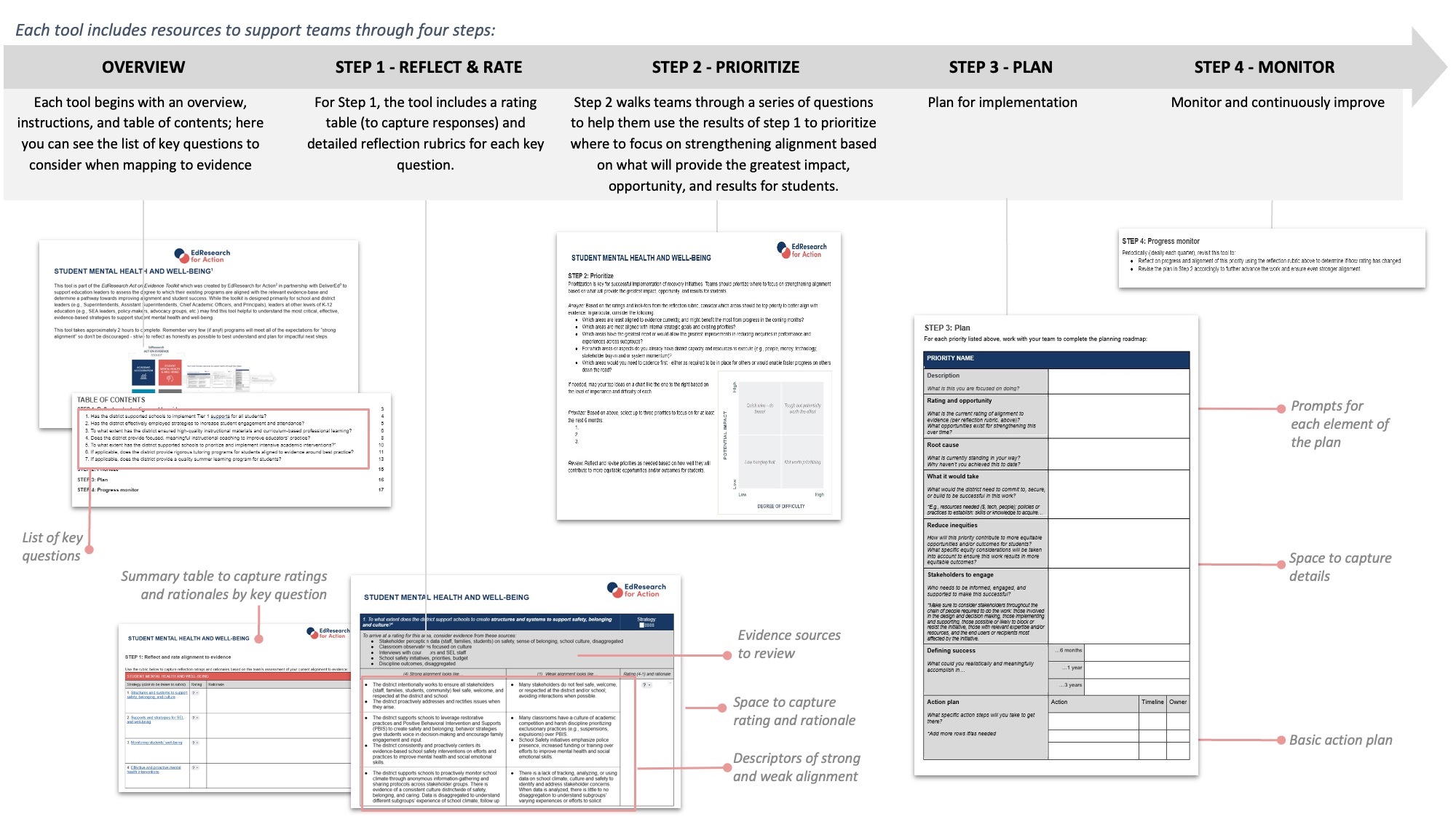
Learn More
Interested in learning more about how the Act on Evidence Toolkit can help you understand and improve existing programs’ alignment with evidence? Please use this form to let us know and we will reach out with information on upcoming webinars and other opportunities to learn more!
Have feedback? Need more help?
Please share any feedback you have or request additional assistance by emailing Heather Boughton
Email UsFrequently Asked Questions
Q. How do I download and complete the toolkit?
A: You can review the content for each of the four rubrics online and download a PDF version of the tool using the following links:
- Academic Accelerations
- Student Mental Health and Well Being
- Family and Community Partnerships
- Coherence Across Initiatives
Note that we are asking you to provide a small amount of information about yourself so that we can learn more about who is utilizing the toolkit in order to improve it over time.
Q: What if our district is only focused on one area? What if a section doesn’t apply to us?
A: That’s great! You can utilize whichever portions are applicable to your situation. They are designed to be used independently.
Q: What if I have questions about how to complete the tool?
A: We would love to answer them – please reach out to Heather Boughton with any questions.
